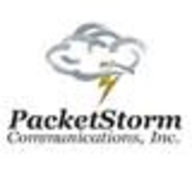The following capabilities are among the main features in the new, third generation, iTrinegy INE Enterprise and Ultra range:
Easy To Use GUI: Install the easy-to-use drag-and-drop INE Visio®-like GUI onto an unlimited number of Windows, Mac and Linux workstations enabling you to easily draw out, configure and view your networks.
Real-world Networks: Recreate LAN, WAN, Cloud, Internet, Mobile, WiFi, IoT, Satellite and other types of networks in configurations including point-to-point, hub-and-spoke and fully meshed configurations using multiple links, each with their own set of network “impairments”.
Real-world Network Impairments: Choose from over 50 built-in “impairments” that mimic real-world normal and abnormal network effects including link bandwidth, latency, loss, error, fragmentation, duplication or reordering and queuing.
Cloud: INE’s built-in Cloud feature lets you easily create, in a single object, complex network topologies including star-coupled, hub and spoke and fully meshed. Routing definitions between all end-points and link characteristics are easily setup and managed using the Cloud Object table without the need to draw out each link definition.
Congestion & Traffic Generation: Easily create and vary network congestion to make a link appear busy without using expensive traffic generators. Generate both internal and external traffic to create congestion using real packet flows.
Packet Classification, Filtering & Routing: Classify, route, filter and selectively impair traffic by any packet field within any protocol layer (2-7) using a Wireshark-like syntax. Bridge and/or route traffic via the emulator enabling you to mimic the complexity of your real world network.
Cicso QoS Class of Service Handling & Traffic Shaping: Model Cisco’s (and other similar) QoS class of service and traffic shaping algorithms to test an application’s ability to work with Cisco QoS classes, with or without traffic shaping.
Integration: Easily integrate with the most complex network environments and can be used inline with your test equipment or configured to route and impair traffic in VLAN
configurations such as router-on-a-stick. At the same time other traffic, not under test, can flow through the emulator unimpaired.
Scenarios & Scenario Library: Create time-based scenarios by automatically changing the network conditions to reflect the real world network or test requirements. Create a central scenario library on the INE allowing users to efficinetly share saved scenarios.
Every Port to Every Port Connectivity and Virtual Ports: Route traffic from port-to-port or port-to-multi-port, including both physical and virtual ports, without any limitations on connectivity. This includes “routing” in bridged networks. Create up to 240 new virtual ports as subdivisions of physical ports enabling rapid extensibility of the Emulator. Traffic for virtual ports can be classified by VLAN, IP Address (V4 and V6), IP Port or packet data. Removes the need to purchase expensive multi-port appliances that cannot scale-up and protects your investment for future projects.
Graphs: Easily see what is happening to packet flows in the test network. Get easy and fast visibility into your application’s performance using over twenty built-in graphs including an export data feature for offline analysis in other tools. Packet capture at any point in the virtual test network enables you to analyze and inspect application behavior in detail enabling rapid debug of application performance issues.
Packet Capture: Full packet capture in pcap format at any point in the virtual test network provides pervasive application visibility, analysis and troubleshooting for use with other tools including Wireshark.
Multi-User Set-Up, Administration & Security: Several teams can share a single appliance and run independent emulations in parallel. Users can be easily added via the centralized user-friendly web portal and their access to the emulator’s ports, virtual ports and resources fully controlled.
Optimized Price Point: By using industry-standard hardware or a software virtual appliance and a Packet Engine Programming Language (PEPL) new features can be developed and added faster meaning lower price points for customers when compared with conventional proprietary appliances.
Keeping Pace: The speed at which technology changes is almost impossible to predict but iTrinegy’s customers can be assured that their investment is protected by the continuous development and the release of at least two major product upgrades each year.
http://www.itrinegy.com/index.php/products/network-emulators/ine-range
PacketStorm Hurricane V IP network emulator provides WAN emulation and network simulation for very high data rates. The Hurricane V emulates any network condition in a repeatable and controllable lab setting. To re-create any network condition, the emulator can impair IP and non-IP traffic, provide dynamic, time varying impairments, and use a fully independent and flexible GUI architecture. Data generation provides network simulation without utilizing network resources or equipment.

